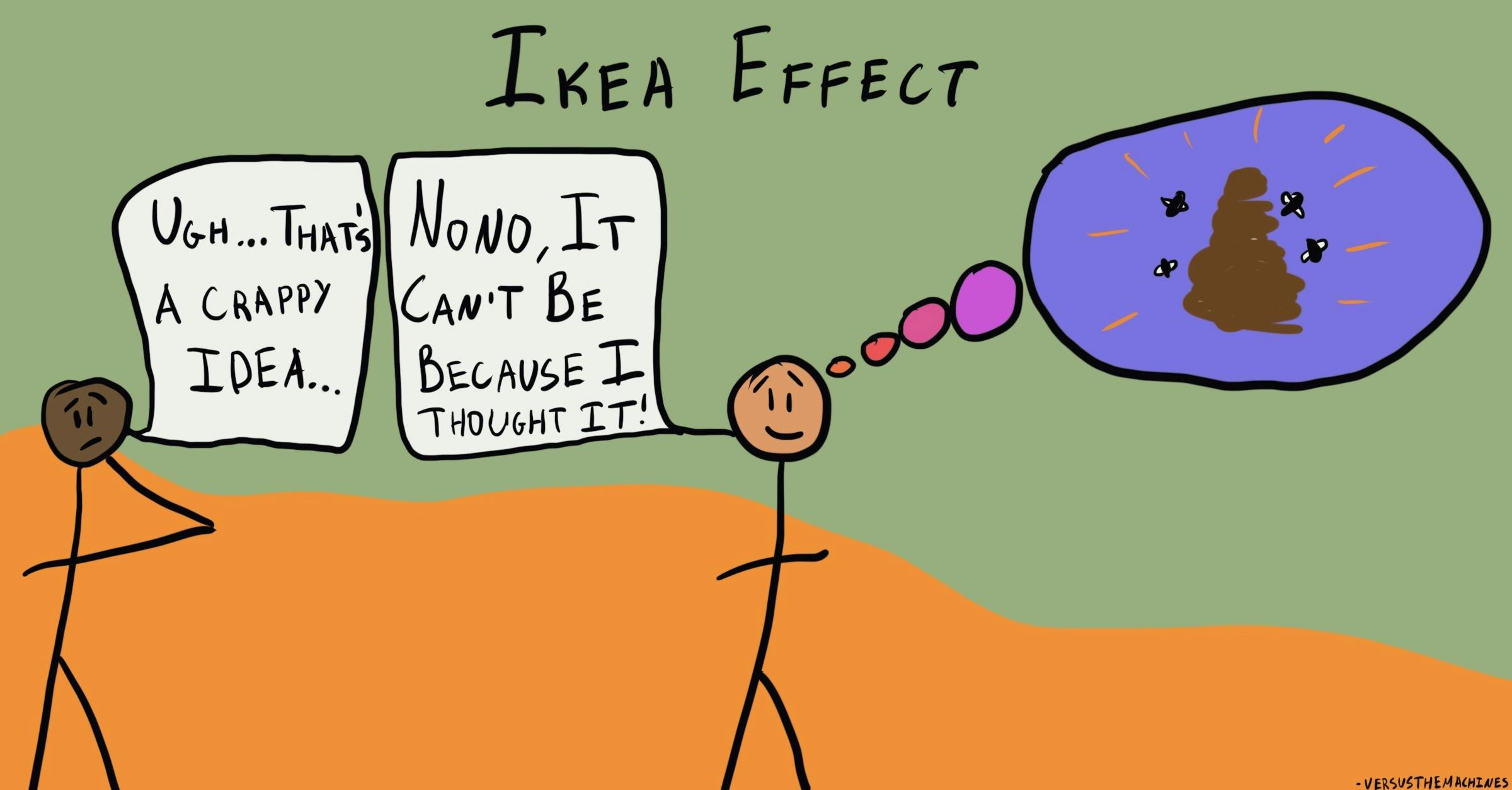Why do we place disproportionately high value on things we helped to create?
IKEA Effect
, explained.What is the IKEA effect?
The IKEA effect, named after everyone’s favorite Swedish furniture giant, describes how people tend to value an object more if they make (or assemble) it themselves. More broadly, the IKEA effect speaks to how we tend to like things more if we’ve expended effort to create them.

Where this bias occurs
Alex has decided that he needs some new furniture to spruce up his apartment, so he makes a trip to IKEA and picks out a nice coffee table with lots of umlauts in the name. As with all IKEA furniture, he takes it home in a box and puts it together himself. Sometime later, Alex is moving and decides to sell his furniture. After doing some Googling, he sees that very similar tables are being sold online for $100, but he decides to charge $125 for his.


















